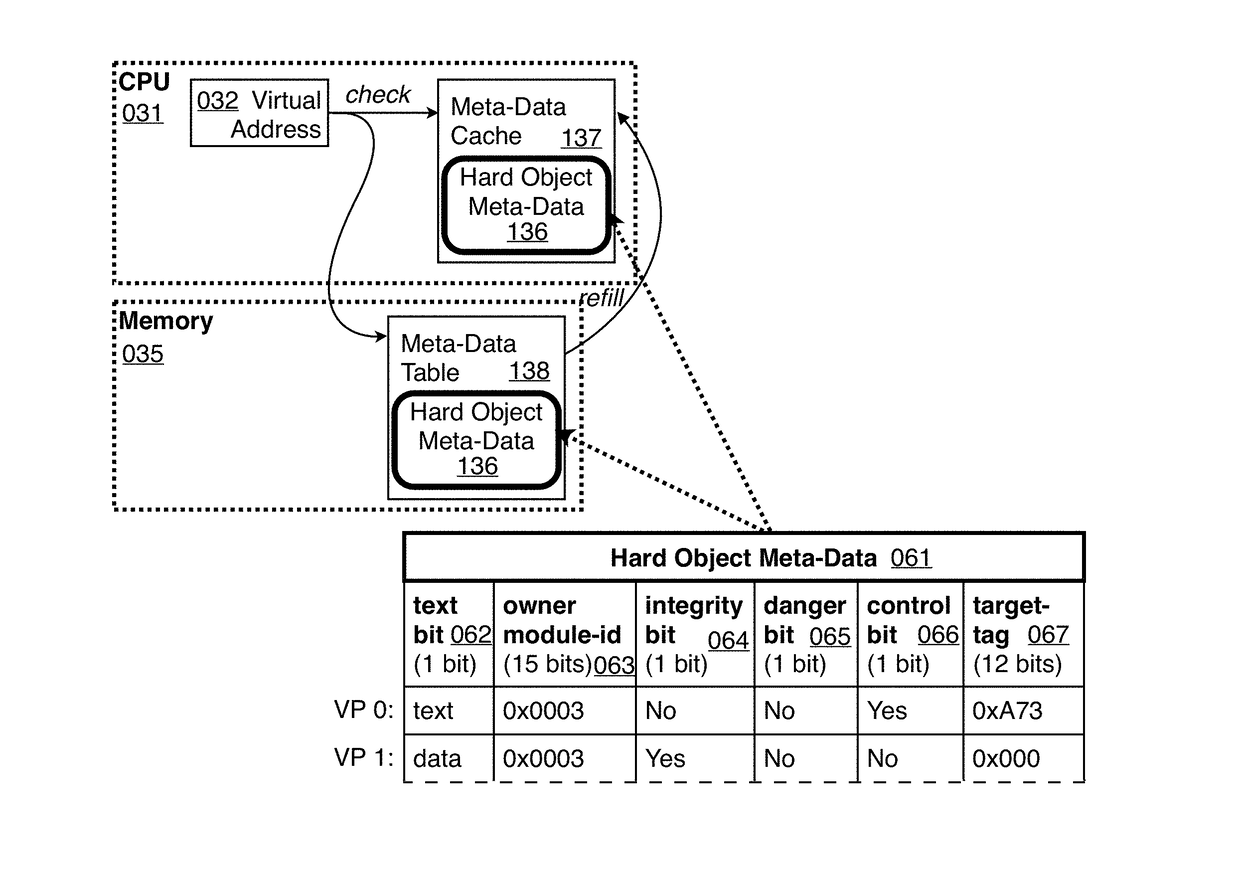Hard object: constraining control flow and providing lightweight kernel crossings
a microprocessor and control flow technology, applied in the direction of unauthorized memory use protection, memory adressing/allocation/relocation, instruments, etc., can solve the problem of unable to write correct software, the task of writing correct software is almost impossible, and the hardware primitives are not suitable for efficient implementation of enforceable separation of programs
- Summary
- Abstract
- Description
- Claims
- Application Information
AI Technical Summary
Benefits of technology
Problems solved by technology
Method used
Image
Examples
first embodiment
[0336]To this end the Hard Object design provides for ownership of data addresses by module-ids and for executable program code (text) of the same module to operate on the data at those addresses, as follows. In the first embodiment, each virtual page is annotated with a module-id called the “owner module-id”063 of the page; see FIGS. 6 and 10a. Text on pages having the same owner module-id can manipulate data on pages having the same owner module-id: that is, (in user mode) when an instruction attempts to access data on a page, the access is allowed if and only if the owner module-id of the page holding the instruction is the same as the owner module-id of the page holding the data 072 (unless that data is on the stack; see below); see FIGS. 1 and 7. A module may only store its data on pages that are owned by itself; the author of the module may thereby ensure any “data invariants” of the data on those pages.
[0337]In a Hard Object system, ownership of a data page may be changed or ...
embodiment 8
[0439]We do this by annotating each I / O device (also input / output device or input-output device) with a particular “device owner module-id”340, just as if it were a page of data; see FIGS. 34 and 35. We envision this annotation of device owner module-ids to devices being chosen at hardware construction time and never needing to change, and thus being built-in to the hardware. Similar to addresses, we denote the device owner module-id annotated onto a device d as d.device_owner_module_id.[0440]We check access to this device in a similar way as we check access to data: when an instruction at an instruction address attempts to access the input or output device, the following checking is done by the CPU (or some other part of the hardware); see FIG. 36.[0441](1) 345 If the instruction is annotated by the danger bit (or if alternative An intermediate danger mode between user and kernel mode is used then this test is changed to: if the kernel mode bit is set) (or if alternative embodimen...
PUM
 Login to View More
Login to View More Abstract
Description
Claims
Application Information
 Login to View More
Login to View More - R&D
- Intellectual Property
- Life Sciences
- Materials
- Tech Scout
- Unparalleled Data Quality
- Higher Quality Content
- 60% Fewer Hallucinations
Browse by: Latest US Patents, China's latest patents, Technical Efficacy Thesaurus, Application Domain, Technology Topic, Popular Technical Reports.
© 2025 PatSnap. All rights reserved.Legal|Privacy policy|Modern Slavery Act Transparency Statement|Sitemap|About US| Contact US: help@patsnap.com



